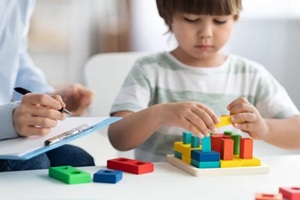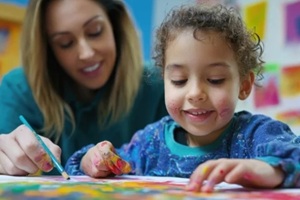
Therapy need not be only for adults; children can also benefit from guidance from a therapist. Children’s therapy focuses on many challenges that young people face, from difficulty fitting in at school or among peers to the need for new coping mechanisms to handle stress and anxiety.
Children who have experienced traumatic events may find therapy especially beneficial, particularly when it is geared toward their individual needs and conducted by professionals with experience in children’s therapy.
Children are resilient, but adults may overlook just how susceptible they are to lasting trauma. Whether they experienced or witnessed a traumatizing event, its impact on their lives can resonate for years afterward. Using options such as play therapy, CBT, and other child-centered techniques, therapists can help young individuals process their experiences and rebuild emotional resilience.
Do Children Need Therapy?
Many parents do not immediately consider therapy as an option for children because they believe that it does not suit them. However, children can gain many advantages from working with a therapist. Some children need therapy to process the events they have encountered or maneuver difficult emotions for which they are unprepared. Therapy is not only the purview of adults, but parents must do their due diligence to find a therapist who works with children and supports their therapy process using tools that benefit children specifically.
Children’s Therapy Options for Trauma
In many instances, children do not respond (or at least not as readily) to the therapy techniques that are successful for adults. It often does very little to sit a child in a chair and ask them to be introspective or think critically; their brains may not have even developed the capacity to do so yet, depending on their age. Instead, therapists have access to a wide range of potential tools to get at the heart of the issue and communicate with young people in a language that resonates with them. Options include:
Play Therapy

Play therapy is one of the most common methods child therapists use to understand how a child’s mind works and where issues may arise. They allow the child to play freely, offering various toys and activities. Then, they observe to see how the child responds. Do they fail to engage with play, preferring to sit quietly?
Do they break toys, throw them, or quickly become angry when things are not going their way? These behaviors can indicate the child’s challenges and emotional state. From there, the therapist can begin addressing these issues through collaborative play, simple talk therapy, and other options suited to the child.
Trauma-focused Cognitive Behavioral Therapy
While children are not fully capable of the same kinds of rationalization as adults, cognitive behavioral therapy can still be a useful tool. Therapists who use trauma-focused CBT usually involve the parents as well, and together, the parents and child develop a stronger supportive relationship to overcome difficult situations and feelings. This type of CBT may include gradual exposure to reminders of the traumatic incident to slowly desensitize the child (and potentially the parents) to the event.
EMDR
Eye movement desensitization and reprocessing, or EMDR, combines exposure to the trauma with other stimuli, such as eye movement. Splitting the brain’s attention between the traumatic event and other things to pay attention to can remove the dramatic impact of the incident on the child’s memory and emotions.
Gradually, the memory becomes less vivid, and children can process it more successfully. Many difficulties only require a few sessions of EMDR. However, it is helpful to continue with other forms of therapy concurrently or afterward.
Art Therapy

When children have experienced trauma and are facing difficulty articulating their feelings, art therapy can be a great solution. Art therapy allows a child to externalize their thoughts and impressions of the traumatic event, especially when they cannot find (or do not know) the words to explain how they feel.
Children who process their trauma through art often transition into greater self-esteem and better self-awareness, which helps them cope later if memories resurface in a negative manner.
Try Children’s Therapy to Handle Trauma
Children should never be exposed to trauma, but sometimes, such outcomes are unavoidable. Suppose your child is having difficulties after experiencing or witnessing a traumatic event. In that case, children’s therapy can provide multiple options for expressing themselves and gradually overcome this challenge.
The professionals at Village Counseling can help your child use play therapy and many other options to return to living a full and joyful life. Contact Village Counseling today to schedule your appointment!
